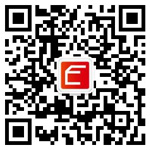
Overview
Product name
Human CD276 knockout HEK293T cell lineSee all CD276 lysatesParental Cell Line
HEK293TOrganism
HumanMutation description
Knockout achieved by using CRISPR/Cas9, Homozygous: Insertion of the selection cassette in exon 2Passage number
<>Knockout validation
Immunocytochemistry (ICC), Sanger Sequencing, Western Blot (WB)Tested applications
Suitable for:WB, ICC, Flow Cytmore detailsBiosafety level
2General notes
Recommended control: Human wild-type HEK293T cell line (ab255449). Please note a wild-type cell line is not automatically included with a knockout cell line order, if required please add recommended wild-type cell line at no additional cost using the code WILDTYPE-TMTK1.
Cryopreservation cell medium:Cell Freezing Medium-DMSO Serum free media, contains 8.7% DMSO in MEM supplemented with methyl cellulose.
Culture medium:DMEM (High Glucose) + 10% FBS
Initial handling guidelines:Upon arrival, the vial should be stored in liquid nitrogen vapor phase and not at -80ºC. Storage at -80ºC may result in loss of viability.
1. Thaw the vial in 37ºC water bath approximately 1-2 minutes.2. Transfer the cell suspension (0.8 ml) to a 15 ml/50 ml conical sterile polypropylene centrifuge tube containing 8.4 ml pre-warmedculture medium, wash vial with an additional 0.8 mlculture medium(total volume 10 ml) to collect remaining cells, and centrifuge at 201x g(rcf) for 5 minutes at room temperature. 10 ml represents minimum recommended dilution. 20 ml represents maximum recommended dilution.3. Resuspend the cell pellet in 5 ml pre-warmedculture mediumand count using a haemocytometer (Click here to view haemocytometer protocol) or alternative cell counting method. Based on cell count, seed cells in an appropriate cell culture flask at a density of 2x104cells/cm2. This should allow for confluency within 48 hours. Seeding density is given as a guide only and should be scaled to align with individual lab schedules.4. Incubate the culture at 37ºC incubator with 5% CO2. Cultures should be monitored daily.
Subculture guidelines:
- All seeding densities should be based on cell counts gained by established methods.
- A guide seeding density of 2x104cells/cm2is recommended for confluency (80-90% confluence) within 48 hours.
- A partial media change 24 hours prior to subculture may be helpful to encourage growth, if required.
- Cells should be passaged when they have achieved 80-90% confluence.
Click here to view the Mammalian cell tissue culture protocol
This product is subject to limited use licenses from The Broad Institute, ERS Genomics Limited and Sigma-Aldrich Co. LLC, and is developed with patented technology. For full details of the licenses and patents please refer to our limited use license and patent pages.
Properties
Number of cells
1 x 106 cells/vial, 1 mLViability
~90%Adherent /Suspension
AdherentTissue
KidneyCell type
epithelialSTR Analysis
Amelogenin XD5S818: 8, 9D13S317: 12, 14D7S820: 11D16S539: 9, 13vWA: 16, 19TH01: 7, 9.3TPOX: 11CSF1PO: 11, 12Mycoplasma free
YesStorage instructions
Shipped on Dry Ice. Store in liquid nitrogen.Storage buffer
Constituents: 8.7% DMSO, 2% Cellulose, methyl etherResearch areas
- Immunology
- Immune Interventions
- Transplantation
- Immunology
- Adaptive Immunity
- T Cells
- CD
- Cancer
- Tumor biomarkers
- Other
- Stem Cells
- Hematopoietic Progenitors
- Lymphoid
- T Lymphocytic Lineage
Target
Function
May participate in the regulation of T-cell-mediated immune response. May play a protective role in tumor cells by inhibiting natural-killer mediated cell lysis as well as a role of marker for detection of neuroblastoma cells. May be involved in the development of acute and chronic transplant rejection and in the regulation of lymphocytic activity at mucosal surfaces. Could also play a key role in providing the placenta and fetus with a suitable immunological environment throughout pregnancy. Both isoform 1 and isoform 2 appear to be redundant in their ability to modulate CD4 T-cell responses. Isoform 2 is shown to enhance the induction of cytotoxic T-cells and selectively stimulates interferon gamma production in the presence of T-cell receptor signaling.Tissue specificity
Ubiquitous but not detectable in peripheral blood lymphocytes or granulocytes. Weakly expressed in resting monocytes. Expressed in dendritic cells derived from monocytes. Expressed in epithelial cells of sinonasal tissue. Expressed in extravillous trophoblast cells and Hofbauer cells of the first trimester placenta and term placenta.Sequence similarities
Belongs to the immunoglobulin superfamily. BTN/MOG family.Contains 2 Ig-like C2-type (immunoglobulin-like) domains.Contains 2 Ig-like V-type (immunoglobulin-like) domains.Cellular localization
Membrane.- Information by UniProt



